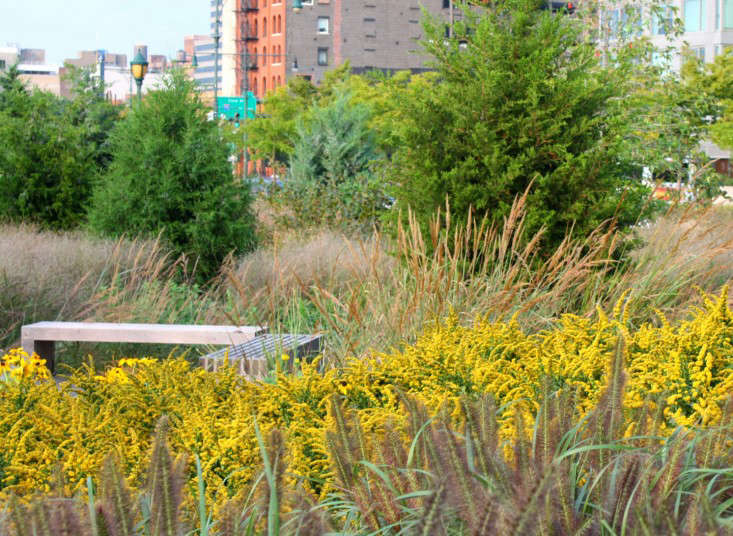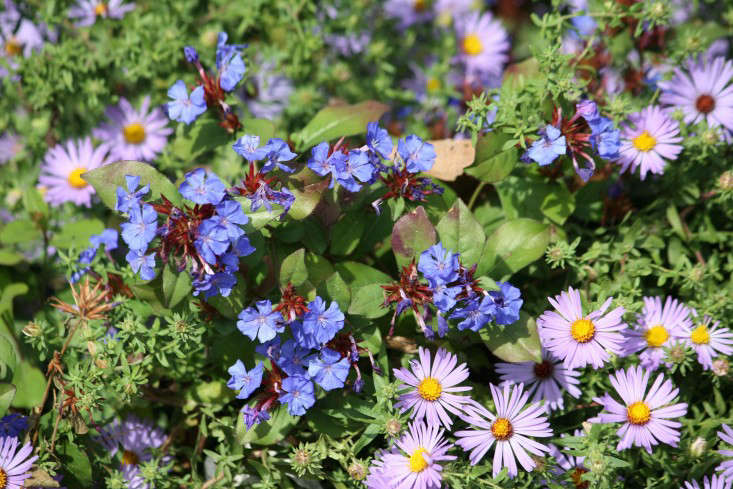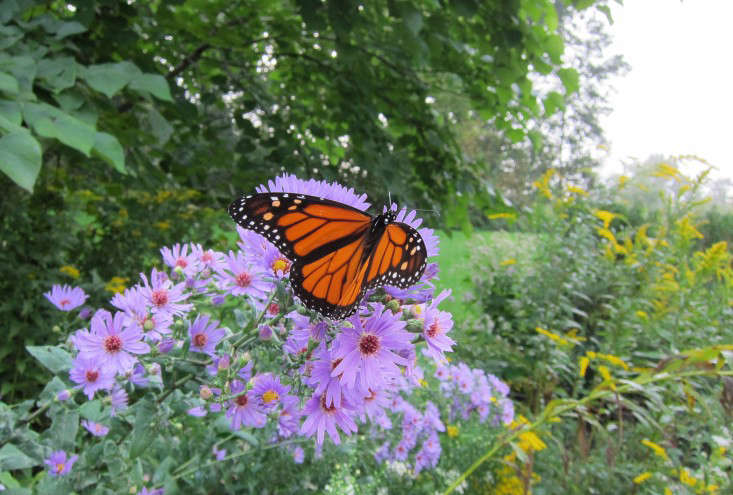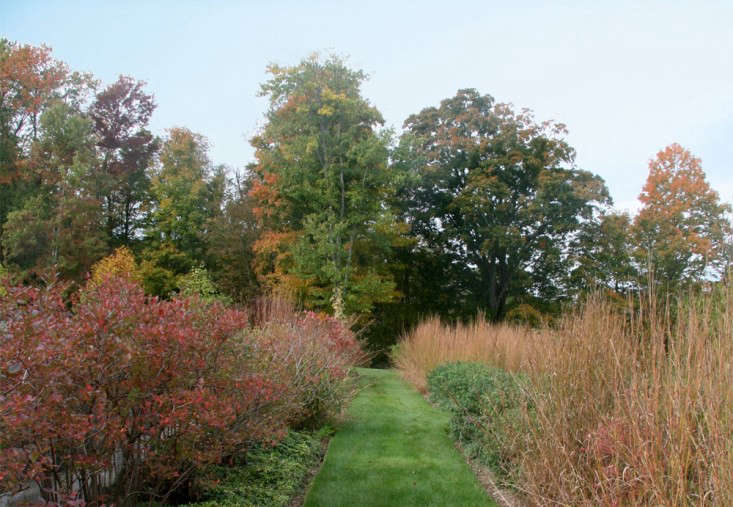On stoops and front porches bright displays of chrysanthemums are symbols of the return of the chilly season, the approach of Halloween, falling leaves, Thanksgiving, the last hurrah before the cold. At garden centers these monoculture mums are stacked dozens deep and lure us with their bright promise of the seasonal celebrations to come. But most mums have a short lifespan and are destined for a compost bin or for the trash; their plastic pots accumulate in the thousands to be binned or recycled and landfilled. Next year we will do it all over again.
Why buy a disposable plant? Instead, we can choose perennials whose bloom time peaks in fall, and which will give pleasure year after year. When longer nights and turning leaves make your palms itch to add color to your garden or front porch, consider your creative options.
Here’s our list of eight favorite autumn-interest perennials, recommended by professional plant lovers who dig thinking outside of the botanical box:
Photography by Marie Viljoen, except where noted.

Jim Glover of Glover Perennials, a renowned grower on Long Island’s North Fork, loves Solidago odora (sweet golden rod). This striking species of the flower that blooms so conspicuously throughout eastern North America “has fragrant and attractive foliage, and is deer resistant,” he says. Its showy yellow flowers are the color of autumn and the leaves when rubbed release a delicious anise-y fragrance.

Amsonia hubrichtii (blue star) defies the stereotype of a perennial as a plant with only a few weeks of interest. Paul Westerveld, the Annual & Perennial Production Manager at Saunders Brothers in Virginia, and who is passionate about all things herbaceous (“especially perennials that are showy across multiple seasons”) puts it high on his list of post-summer beauties. “It has beautiful, sky-blue star flowers in spring, a billowy fine-textured habit all summer, and rock-star fall color that ranges from yellow through orange to russets. It’s native to North America, deer resistant and vole resistant,” he says.

Another of Paul Westerveld’s fall favorites is brilliant Ceratostigma plumbaginoides (plumbago). A mounding perennial that can masquerade as a low shrub, it is also excellent for pots and rock gardens, where it spills over edges, its intensely blue flowers giving way, says Westerveld, “to rich maroon fall foliage.”

Westerveld chooses the cultivar “˜Standing Ovation.’ “The bloom spikes take on violet colors throughout late summer before turning a rich, cinnamon red as it heads into winter.” He says that while the flowers are relatively insignificant, “when the seeds are backlit, they look like little Christmas lights sprouting from the nodes.” Finally, to seal the deal, he adds that “the grass is “native, thrives on neglect, is deer resistant and looks great over many, many months.”

Owens manages the horticultural campus at Youth Build in Louisville, KY, stewarding a vegetable and flower farm that provides an outdoor classroom for students. She is also the former curator of the Cranford Rose Collection at the Brooklyn Botanic Garden. “Vernonia novaboracensis makes a great naturalizer” (if you have the space for it–it can be a thug), while Vernonia lettermanii, she says, “has a very pleasing clumping habit, is shorter in stature, and has incredibly soft and wispy foliage that provides interest all summer…”
Keep your eyes peeled for Sarah’s new, botanically inspired cookbook called Sourdough: Recipes for Rustic Fermented Breads, Sweets, Savories, and More (Roost, 2015).

Marquand is a gardener, botanist, and writer living in the Catskills, and is one of several co-founders of the Catskill Native Plant Society. She (and everyone else we asked) says that asters are the most obvious native alternative. The many native species of aster make it easy to pick flowers for both sun or dappled shade, and some nurseries now also offer hybrids that are about as pleasingly gaudy as the mums that Molly still loves.

A more esoteric choice for stoop aesthetes is Marquand’s suggestion of Pycnanthemum muticum: “This mountain mint doesn’t have the bold colors of chrysanthemum, but its silvery foliage is gorgeous, and the late-season butterflies (and bees) it attracts will do plenty to brighten it up. This particular species mounds better than the others, making it more suitable for a porch display among pumpkins.”

The flowers’ spotted petals are pretty and rich in color rather than toadish. The plant grows tall in dappled shade and is excellent for shady areas where spring and summer blooms are a distant memory. Massed, it is very striking, and it grows well in pots, too.
For more on fall gardening, see:
- Your First Garden: What You Need to Know About Cutting Back Perennials in the Fall
- Fall’s Most Fashionable Flowers: 8 Ways to Style a Surprising Design Darling
- Fall-Blooming Anemones for Autumn Color

















Have a Question or Comment About This Post?
Join the conversation